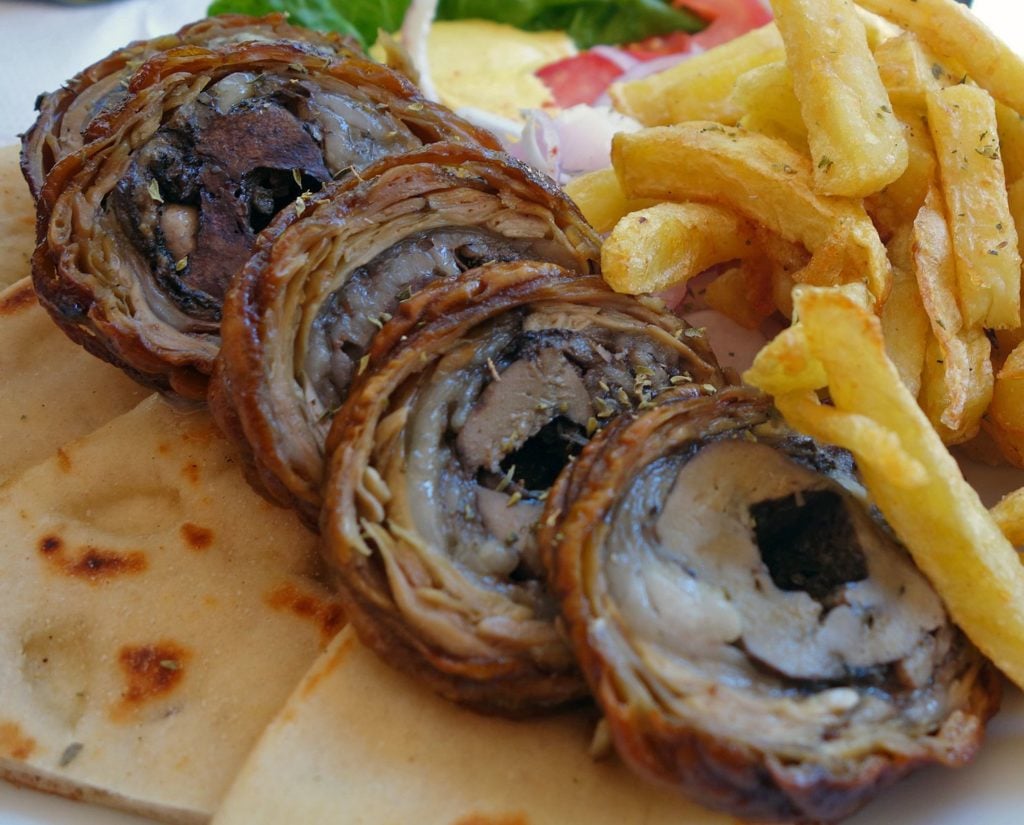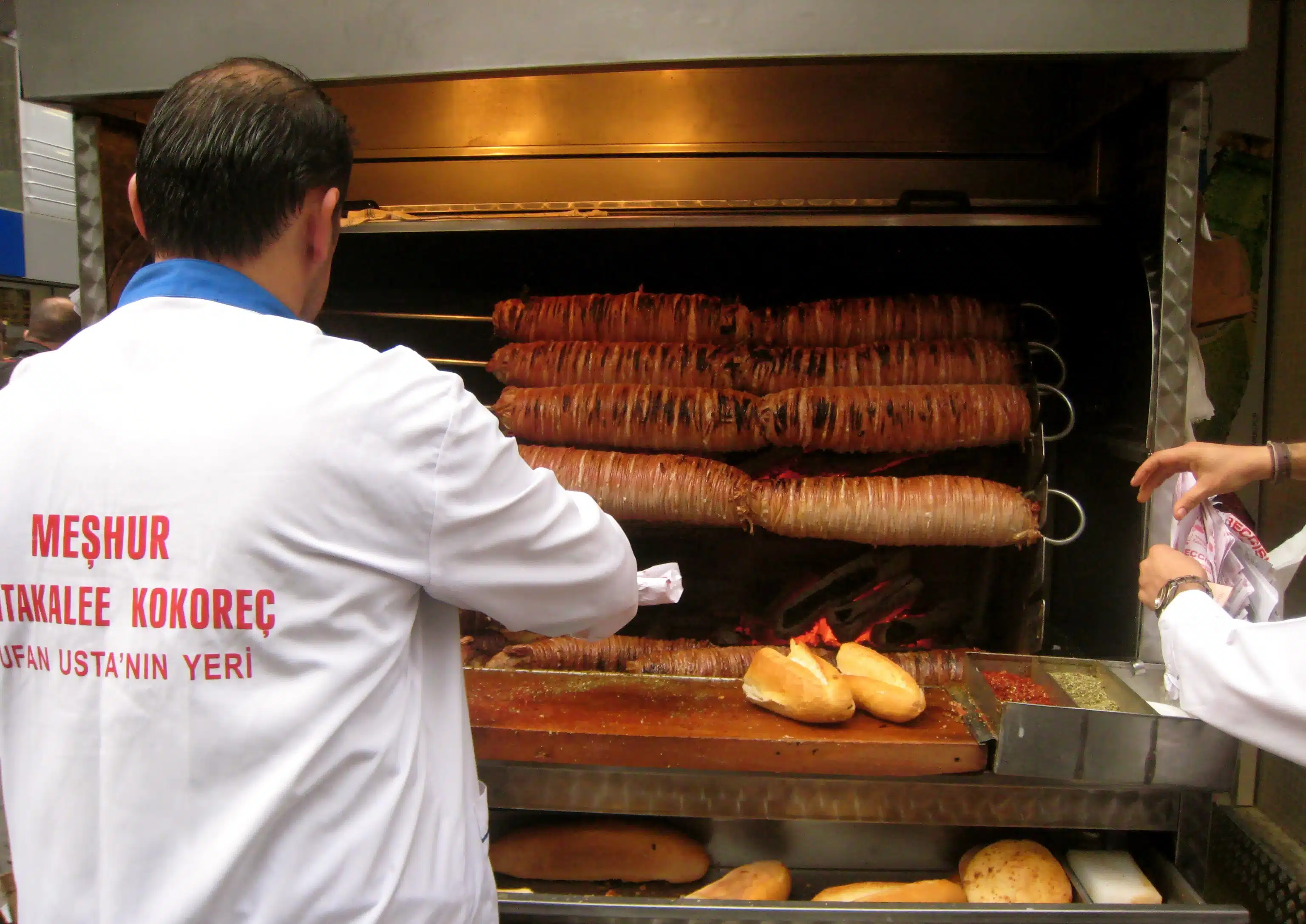
Turkey and Greece have been in an ongoing conflict about the origin of certain foods for decades, anad each side claims several dishes as their own.
Recently, the Turkish newspaper Al Aksam published an article on its front page regarding the roots of both Greek and Turkish food. One of the dishes mentioned was kokoretsi—also known as Kokorec in Turkish. Experts were asked for their opinion to support their argument which, as it turned out, were in favor of Turkey.
In fact, one of the statements read, “The Greeks are claiming our cuisine.”
Insight into the Turkish report
The report emphasized that the Greeks’ claims are not true, with Turkey highlighting that kokoretsi, part of their cuisine, is a Turkish creation.
“After baklava and tzatziki, Greece appropriates kokoretsi,” the publication read, stating that these dishes come from the Ottoman cuisine.
As the report related, “In Greece it is called kokoretsi and it is a traditional Greek dish consisting of lamb or goat intestines wrapped around seasoned lamb or goat by-products, which is cooked like a souvlaki. This is how Greek cooking website[s] present the recipe for this dish.”
Similar disputes for imam bayildi
The same report made similar accusations about imam bayildi and the way Greece presents it.
“Well-known websites consisting of Greek recipes characterize imam bayildi as a Greek food, which originally means ‘imam fainted,'” it was written in the Turkish report.
“Recipe websites state that imam bayildi is a classic Greek recipe and that its roots come from the period of Ottoman occupation,” the writer maintained. “It was named after an imam who ate it and then fainted as he enjoyed it so much. The Greeks of Constantinople made this dish initially and it was later on when it travelled to Greece.”

Is kokoretsi Greek or Turkish? A Greek chef’s perspective
Elias Mamalakis, a Greek chef, spoke about the debate on the Greek-Cypriot channel Sigma.
“Kokoretsi is a Balkan product,” he said. “That’s where its origin is from and it was adopted very early, in the 19th century by both Greeks and Turks. We have testimonies that Karaiskakis, the hero of the Greek war of independence, was a master of the spleen and kokoretsi. We are talking about something that goes back to the 1800s.”
“The Turkish kokoretsi differs a lot [from] the Greek kokoretsi,” Mamalakis explained, trying to differentiate the way in which these two dishes are made. “They have nothing [in common].”
According to Mamalakis, in Turkey, they “make kokoretsi without the gut. They cut a slice after it is cooked, [and] they don’t bake it in ovens but put it in hot jars…Later, they chop it up and mix it with red peppers while they finish it off by making it [into] a sandwich.”
“There are very big differences between the two dishes,” the Greek chef concluded.
The origin of the word Kokoretsi
The Turkish word kokoreç first appeared in Lokanta Esrar, a short story written by Turkish author Mer Seyfettin in 1920. The author wrote that the first time he heard of kokoreç was when it was described to him as a Greek dish made from small lamb intestines by an Athenian who worked in an Istanbul restaurant.
The Greek word kokorétsi derives from the Albanian kukurec, according to Greek linguist and philologist Georgios Babiniotis. Albanian kukurec is a loanword derived from Serbo-Croatian and Bulgarian kukuruza, which originally meant corncob in these languages, according to Turkish-Armenian linguist Sevan Nişanyan.
Nişanyan also claims that the Greek word is not derived from the Albanian kukurec, but that both words are cognates that were borrowed independently from South Slavic languages.
Kokoretsi in Ancient Greece
The ancient Greeks used to cook whole lambs and goats on skewers, as well as smaller pieces of meat. These skewers were either made of wood or metal.
Apart from lamb, they skewered kokoretsi, which was also called “Mimarkys” (Μίμαρκυς) and “Plekti” (Πλεκτή) meaning knitted. For its preparation, the intestines were marinated with vinegar, honey, and water. Vinegar had an antiseptic role and also dehydrated the intestine from the big amount of fats. The honey created a caramelized crust. The preparation process for kokoretsi is even mentioned in Homer’s Iliad.
Chef Nikos Fotiadis said, “Kokoretsi is documented in the works of Homer, who reveals to us that it was made [in] ancient Greece. In fact, the details regarding its preparation are very interesting. The honey in kokoretsi is initially not so evident, but once it is baked, its presence is seen in the texture of the final result.”
Additionally, a dish similar to modern kokoretsi is recorded in Byzantine cuisine. They referred to it as plekti, or koilióchorda, or chordókoila; the latter two are preserved with the meaning of wrapped intestines in the Greek idioms of Corfu as tsoilchourda, Chios as soilgourda and Pontians as chordógkoila.
See all the latest news from Greece and the world at Greekreporter.com. Contact our newsroom to report an update or send your story, photos and videos. Follow GR on Google News and subscribe here to our daily email!



